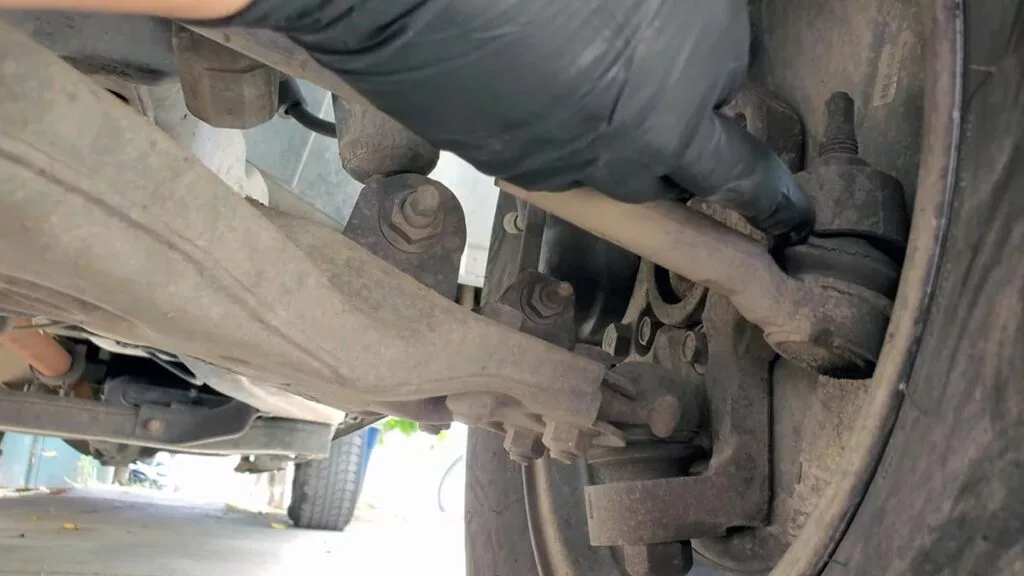A Steering wheel with perfect control is one of the most essential and crucial safe driving measures. So, the issues with the steering wheel should not have to be ignored, and you have to find a solution for it as soon as possible. In this article, we mainly discuss the issue of steering wheel turns by itself.
How can you sense that there is an issue with your steering wheel?
Before study about the steering wheel turns by itself, This para will help you understand the types of indications you can use to recognize the issues with your steering wheel. Try to recall what are the sounds and feelings that you heard and felt when driving.
The wheel is difficult to turn.
This might indicate a problem with your power steering system, which is common in modern vehicles. There are a few things to verify before you begin. If it isn’t, you should do something to remedy the situation. It’s best to look for any indicators of fluid leaks beneath the car if it drops again when you check. Steering pump, hose, or rack leaks are all possibilities.
Vibrations in the steering wheel.
Steering wheel vibrations are generally a sign of wheel alignment issues, but they may also be a sign of a problem with the power steering. When the wheel is rotated in one direction, impurities in the system might cause the steering wheel to ‘pulsate’ or vibrate. This issue may be resolved most of the time with a simple power steering flush.
When you try to turn or hold the steering wheel in a turned position, it slides. One another indication that the power steering system needs repair. Power steering failure may also be caused by a malfunctioning pump, damaged steering rack mounts, or loose or worn steering belts.
The average for family automobiles is between 2.7 and 3.2 turns (about 972 to 1152 degrees). Driving on the racetrack takes longer to transition between corners, which means you’ll have to use more effort to drive the car. – itismycar.com
Looseness in the wheel’s position.
Looseness in the wheel’s position. Wear on the steering rack, and tie rods are frequently to blame.
Excessive steering wheel vibration.
You feel a lot of vibration in the steering wheel. Tie rods are the most common source of this problem. Allowing the vibration to continue can ultimately lead to a loss of steering, so it’s essential to fix the issue as soon as you notice it.

Excessive play on the steering wheel.
The vehicle veers over to one side or wanders. This is a common sign of worn-out steering gear. If you are replacing a worn steering gear, you should also check for power steering fluid leaks since this might cause premature wear of the gear.
Grinding noise.
Additionally, excessive motion in the steering wheel might indicate worn or defective steering gear. There is an issue with the steering gear if you have to spin the steering wheel more than an inch before the wheels begin to turn.
When rotating the steering wheel, if there is a grinding sound. One more sign that something is wrong with the steering gear.
Screeching noise.
The sound of grinding metal as you spin the wheel is audible here. In many cases, a slack or worn-out power steering belt is the root cause of this problem. This belt links the power steering pump to the engine. As previously indicated, the screeching sounds might be a sign of low power steering fluid levels.
Foaming or discolored power steering fluid.
Power steering fluid that is foaming or discolored. Air or water has gotten into the system, causing the liquid not to lubricate the components effectively.
What causes the steering wheel to turn by itself?
Many possible factors are causing the vehicle to lose its balance. So what are those factors, and how do they affect the imbalance of the car?
Un-even tire pressure.
Cars that pull to the left or right might be fixed by simply inflating or deflating their tires. Incorrectly inflated or overinflated tires might cause your automobile to tilt and, as a result, alter its alignment. Additional rolling resistance from under-inflated tires contributes to the sensation of pulling.

First and foremost, when you detect your vehicle tugging to one side, you should check the pressure on all four tires. In such a case, something else must be at fault for the erratic behavior.
An incorrect wheel alignment.
Incorrect wheel alignment is the most frequent cause of an automobile pulling to one side. If this is the case, the automobile will likely drift in one direction when you release the steering wheel, and the steering wheel’s usual position is unlikely to restore. Additionally, uneven tread wear may be seen if you visually inspect your tires.
However, your car’s wheel alignment may gradually shift one way or another due to driving over potholes or bumping into curbs. As part of the wheel alignment procedure, technicians use sophisticated alignment equipment to restore the vehicle to its original factory specifications.
Stuck brake calipers.
Brake pads are applied by hydraulic pressure via the calipers, which are themselves driven by hydraulics. The car will pull to one side if one of its calipers, which are located on each wheel, becomes jammed.
Alternatively, the wheel cylinder or hydraulics may be in trouble.
As a consequence of the brake’s excessive friction, it will get quite hot, and you may smell burning and see the vehicle pull to one side.
Having a competent technician examine and repair your vehicle’s braking system is essential to its safety.
Different types of textures.
The tread pattern of each tire is predetermined. Even under the same brand, there will be a variety of tread designs that have distinct wear and rolling properties.
A pull might be caused by anything as easy as switching out a front tire with one that doesn’t match the rest of the set. When changing tires, it’s best to do it in pairs and mount the replacements on the back axle.
FAQs about steering wheel turns by itself.
What would cause my steering wheel to turn on its own?
My steering wheel moves on its own for no apparent reason. Because your wheels, which are linked to your tie-rods, steering rack, steering shaft, and steering wheel, will all move in tandem with the road.
What does it mean when your steering wheel moves side to side?
Shimmy is a term used to describe a vehicle’s front wheel swaying on its steering axis, causing a noticeable tremor from side to side. Possible Reasons are,
- Tires that have uneven or low pressure.
- Secondly, there may be a problem with the steering or linkage.
- Loose ball joints.
Why does my steering wheel move when I hit a bump?
When the suspension is compressed, your tires contact the bottom of your vehicle because your automobile doesn’t have enough suspension to absorb the bump it is going over. Bump steer occurs when your car hits a bump, and the wheels move left or right without the driver moving the steering wheel.
I hope you like the post and gained some useful information regarding the “Steering wheel turns by itself“. If you have any further questions, please leave a comment below and we will respond with more competent solutions. Also, if you have any questions concerning Car dashboard removal , take a look at here.
